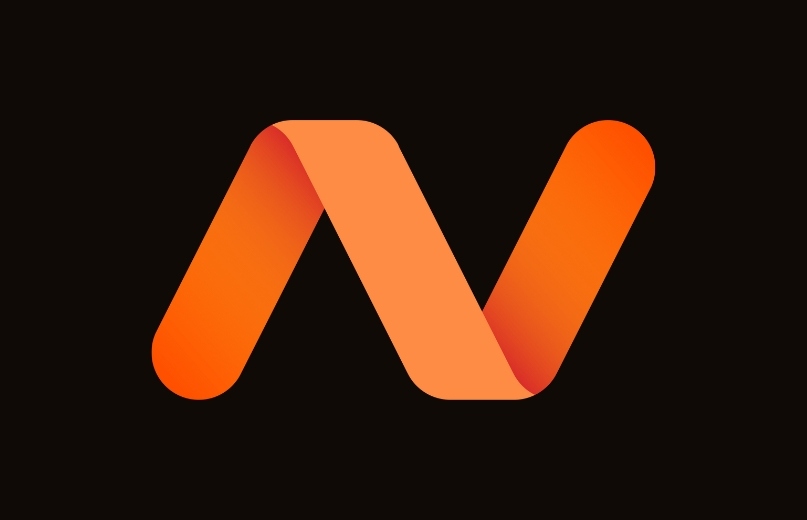
How to Buy a Domain from Namecheap How to Buy a Domain from Namecheap (2025 Guide) Starting a website or online business...
Picked Digital is one of the best data-driven digital marketing agencies in Bangladesh. We provide a wide range of digital marketing services to help businesses grow and succeed online.
Imagine waking up to consistent sales without running ads or posting on social media. Sounds impossible? For many online stores in Bangladesh’s booming e-commerce market, strategic SEO optimization makes this reality. Like building a sturdy home foundation, proper setup ensures long-term growth.
Shopify’s built in tools simplify technical tasks, but knowing where to focus matters most. Successful stores match what shoppers search for – whether it’s “handmade jute bags” or “organic turmeric powder.” This alignment turns random visitors into buyers.
Optimizing product pages and improving site speed become crucial in Bangladesh’s competitive digital space. Local shoppers increasingly use precise search terms, and stores answering these queries best dominate rankings. It’s not about complex tech skills – it’s about smart adjustments.
Key Takeaways

In Bangladesh’s crowded online marketplace, basic optimizations separate thriving stores from forgotten ones. Think of these adjustments as digital storefront upgrades – they make your website easier to find and more inviting to customers actively hunting products.
Owners using custom domains see 37% higher trust scores than those with myshopify.com addresses. A unique web address acts like a branded signboard – it tells search engines and shoppers you’re serious. Mobile-friendly themes matter even more here, where 92% of internet users browse via smartphones.
| Feature | Subdomain Store | Custom Domain |
| Brand Recognition | Low | High |
| SEO Control | Limited | Full |
| Mobile Performance | Varies | Optimized |
Proper setup brings visitors already interested in your niche. A Dhaka-based tea seller targeting “premium loose-leaf black tea” attracts buyers ready to purchase. This beats random social media clicks that rarely convert.
Google’s mobile first indexing means slow loading pages hurt rankings. Themes like Dawn ensure smooth browsing across devices – crucial for Bangladeshi shoppers using budget smartphones.
Behind every successful online store lies invisible groundwork that keeps the digital wheels turning. Think of technical SEO as your store’s silent salesperson – working 24/7 to ensure search engines can find, understand, and recommend your pages to potential buyers.
Bangladeshi shoppers using entry-level smartphones won’t wait for sluggish pages. Stores loading in under 2 seconds see 35% higher conversion rates. Three quick fixes:
Proper indexing starts with clean navigation. A clothing store organizing products by “Men/Women/Kids” helps both customers and search engines find items faster. Internal links between related products act like guided store tours.
| Factor | Ideal State | Common Errors |
| Page Load Time | Unoptimized images | |
| Mobile Responsiveness | Perfect display | Theme conflicts |
| Crawl Depth | 3 clicks max | Buried pages |
Shopify automatically creates a sitemap your store’s blueprint. Submitting it through Google Search Console is like handing delivery drivers GPS coordinates. Stores doing this get indexed 50% faster according to recent data.
“A well-configured robots.txt file acts as traffic police for web crawlers – directing them to your best products while blocking stock rooms.”
Most Bangladeshi stores benefit from allowing full access. But those with private collections should block specific URLs. Always test changes in Search Console’s robots.txt tester before saving.
Remember: Shopify handles 80% of technical SEO automatically. Your job? Focus on the remaining 20% – speed tweaks, smart app choices, and regular crawl error checks.
Successful online stores in Bangladesh grow like mango trees – strong roots first, juicy fruits later. Three core elements form this digital root system: technical stability, page-level polish, and external credibility.
Technical groundwork starts with Shopify’s dashboard. Enable automatic sitemap generation under “Online Store > Preferences.” Compress product images using built-in tools – crucial for mobile users on slow networks. A Dhaka-based jewelry seller reduced load times by 40% this way.
Page optimizations turn visitors into customers. Craft unique titles containing local search terms like “pure cotton sarees Dhaka.” Use the content editor to naturally weave keywords into product descriptions. Internal linking between related items keeps shoppers exploring.
| Pillar | Focus Area | Key Action |
| Technical | Site health | Fix broken links monthly |
| On-Page | Relevance | Update meta descriptions |
| Off-Page | Authority | Build local partnerships |
External signals matter most in competitive niches. Bangladeshi tea brands collaborate with food bloggers for authentic backlinks. Social shares act as virtual word-of-mouth – 63% of Dhaka shoppers discover stores through Facebook posts.
Shopify’s automated features handle basics, but winners go further. Monthly search term reviews in Google Analytics reveal new opportunities. Stores combining all three strategies typically see 50% more organic traffic within six months.
Crafting product pages that speak your customers’ language separates thriving Bangladeshi stores from digital ghosts. On-page optimization acts like a skilled translator – converting search engine requirements into shopper-friendly experiences.
Dhaka-based stores analyzing local search patterns discover goldmines. A jute bag seller might find “eco-friendly-totes Bangladesh” gets 3x more searches than generic terms. Free tools like Google Trends reveal seasonal spikes – crucial for festive campaigns.
| Tool | Best For | Local Insight |
| Keyword Planner | Volume Data | Bangla translations |
| AnswerThePublic | Question Phrases | Regional dialects |
| Ubersuggest | Competitor Gaps | Mobile search trends |
Title tags become digital billboards. “Pure Cotton Sarees Dhaka | Handloom Collection” outperforms vague “Traditional Clothes.” Meta descriptions should tease benefits: “Discover chemical-free dyes” beats generic product lists.
A Chittagong tea shop using “/green-tea/organic-matcha” URLs converts better than “/product1234.” Clear paths help customers and crawlers navigate. Shopify’s auto-generated URLs often need cleanup – remove redundant parameters.
Heading tags create content roadmaps. H1s declare page purpose: “Authentic Nakshi Kantha Quilts.” H2s break down features: “Hand stitched Patterns” or “Natural Dye Process.” Include related terms like “heritage crafts” naturally within subheadings.
“Optimized pages answer questions before they’re asked. A customer searching ‘best price’ wants clear pricing – not poetic descriptions.”
Stores using this layered approach see 68% longer page engagement. Regular content audits ensure pages stay relevant as search trends evolve. Remember: perfect optimization balances technical precision with human connection.
Building digital relationships matters as much as perfecting your store. Off-page SEO works like neighborhood recommendations – trusted voices telling search engines your website deserves attention. Bangladeshi stores benefit most when combining strategic outreach with organic growth.
Reaching out creates opportunities. A Dhaka-based spice merchant landed 12 quality links by:
| Strategy | Effort | Results Timeline |
| Guest Blogging | High | 4-8 weeks |
| Skyscraper Technique | Medium | 6-12 weeks |
| PR Campaigns | Variable | Immediate to 3 months |
The skyscraper method works well for competitive niches. Find popular content about “jute products,” create deeper guides with artisan interviews, then contact sites linking to weaker resources.
Consistency builds authority over time. Bangladeshi tea brands gain links through Instagram reels showing farm-to-cup journeys. Facebook groups discussing traditional crafts naturally reference quality stores.
“Shares from local Facebook communities drove 40% of our referral traffic last quarter,” notes a Rajshahi-based handicraft seller.
Passive linking thrives on shareable content like:
Think of your online store as a car dashboard – Google Search Console and Analytics are the gauges showing what’s running smoothly and what needs tuning. These free tools reveal hidden opportunities in Bangladesh’s competitive market, especially for stores targeting mobile-first shoppers.
Verifying ownership in Search Console acts like claiming your store’s digital deed. Dhaka-based sellers complete this via DNS records or HTML file upload. Once verified, submitting your sitemap ensures Google indexes all product pages-critical for new collections launching before Eid sales.
| Tool | Primary Purpose | Local Benefit |
| Search Console | Monitor indexing | Fix mobile errors common on budget devices |
| Analytics | Track user behavior | Identify popular regional search terms |
The Coverage Report becomes your early warning system. A Chittagong handicraft store discovered 12% of pages weren’t indexed due to duplicate meta tags. Fixing these boosted organic traffic by 18% in six weeks.
Performance reports reveal what works. Stores analyzing search results data often find:
“Search Console helped us realize 40% of customers searched for ‘cash on delivery’ – we added it to product descriptions and saw immediate conversions,” shared a Dhaka electronics retailer.
Regular checks prevent small issues from becoming ranking roadblocks. Combined with Analytics’ traffic insights, these tools form the backbone of data-driven SEO strategies.

Great online stores act like bridges – connecting what customers need with what search engines reward. In Bangladesh’s fast-moving market, content that answers every possible question keeps shoppers engaged and algorithms impressed.
Creating helpful material starts with understanding local needs. A textile seller addressing fabric care in detail satisfies both curious buyers and search crawlers. Product pages covering sizing charts, delivery timelines, and craft techniques often rank higher than basic listings.
Shopify’s structured data tools give products star power in search results. Automatic rich snippets display prices and availability – crucial for mobile shoppers comparing options. Stores adding recipe ideas to spice listings or styling tips to clothing collections see longer page visits.
Google prioritizes content that ends search journeys. A Chittagong tea shop including brewing guides and regional pairing suggestions keeps visitors from clicking back. Regular updates based on Analytics data ensure pages stay relevant as trends shift.
Winning strategies blend thorough answers with smart technical touches. When customers find complete solutions and search engines see organized data, rankings and sales grow together naturally.
Why is a mobile-ready theme critical for Shopify SEO?
What tools help with keyword research for ecommerce product pages?
Can broken links hurt a Shopify store’s search engine rankings?
Should alt text include keywords for product images?
How does Google Search Console benefit Shopify store owners?
Are blog posts necessary for driving organic traffic to Shopify stores?
What’s the ideal length for meta descriptions on product pages?
Do backlinks from social media profiles improve SEO?

How to Buy a Domain from Namecheap How to Buy a Domain from Namecheap (2025 Guide) Starting a website or online business...

How to Choose the Right SEO Service in 2025 (Backed by Strategy & Results) How to Choose the Right SEO Service in...

How to Do SEO for a Real Estate Website | A Step-by-Step Guide (2025) A well-executed real estate SEO strategy ensures your...

How to Set Up SEO on Shopify and Boost Your Store’s Rankings Imagine waking up to consistent sales without running ads or...
Copyright 2025 © Picked Digital, All Rights Reserved.